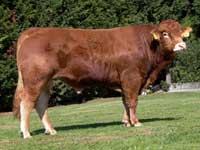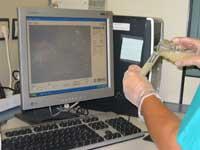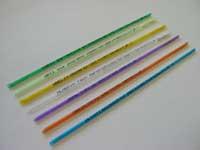Bulls and cows without horns
They are, they are the bulls, they are the short tail, the pointed branch, if you catch, catch you, touch you and kill you... says the lyrics of a well-known Basque song. Yes, in most cases. Most bulls and cows have horns, which are the characteristic of these animals since birth. But not always. There are also cows and bulls born without horns.

Without going any further, Aberekin of the Zamudio Technology Park has launched an investigation into the birth of horned cows and bulls in generations to come. To do this, it will genetically control these animals.
“Logging of milk cows is very common among farmers. This work is very common among the daily activities of a farm. Every week they cauterize the branches to the newborn calves”, explains Carlos Ugarte Aberekin.
What is it done for? Maybe more than one asks. These animals are mainly cut to facilitate the work of farmers, reducing accidents caused by ramifications. Fights between animals are also reduced. It is not a new issue, it is a widespread activity among farmers. 90% of milk cows are maimed. However, this technique is less used with beef cattle. Only 10% of these animals are mutilated. Because these cows and bulls inhabit the pasture, many farmers believe that if they cut the branches they remain unprotected.
Companion genetics

In order not to have to cut the branches, the solution is that these animals will be born without branches. This is one of the tasks being carried out at Aberekin. To do this, they produce genetically bred bull seed. That is, among all the bulls on your farm choose animals with proper genetic conditions. The aim of this study is to analyze the DNA of animals. Genetic analysis is performed in the laboratory of the UPV/EHU Genomic Service. The analysis of different genetic markers present in the DNA allows to identify the characteristics of the animals, in this case, for example, if the animal analyzed has branches or not. The seed is then used to inseminate the cows, without forgetting the goal that in the coming generations cows without horns and bulls emerge.
“We have done the first insemination with a limousine bull and we hope to see the first results in grasslands in autumn,” explains Carlos Ugarte.

“Looking ahead, the goal is to continue to make an adequate selection of stallions and to transmit from generation to generation the birth gene without branches. In this way, the number of calves born without horns will progressively. With a work of 10-12 years, it is possible that 50% of the calves that are born are free of branches,” he explains.
“That’s not the only goal. In fact, the characteristics related to meat production are very important. That is, we cannot exclude bulls of good characteristics, even if they have horns” adds Ugarte.
Undoubtedly, the ideal is that they are bulls with a hornless gene and with racial characteristics suitable for meat production. “We want to find that ideal,” says Ugarte.
Published in 7k
Buletina
Bidali zure helbide elektronikoa eta jaso asteroko buletina zure sarrera-ontzian











